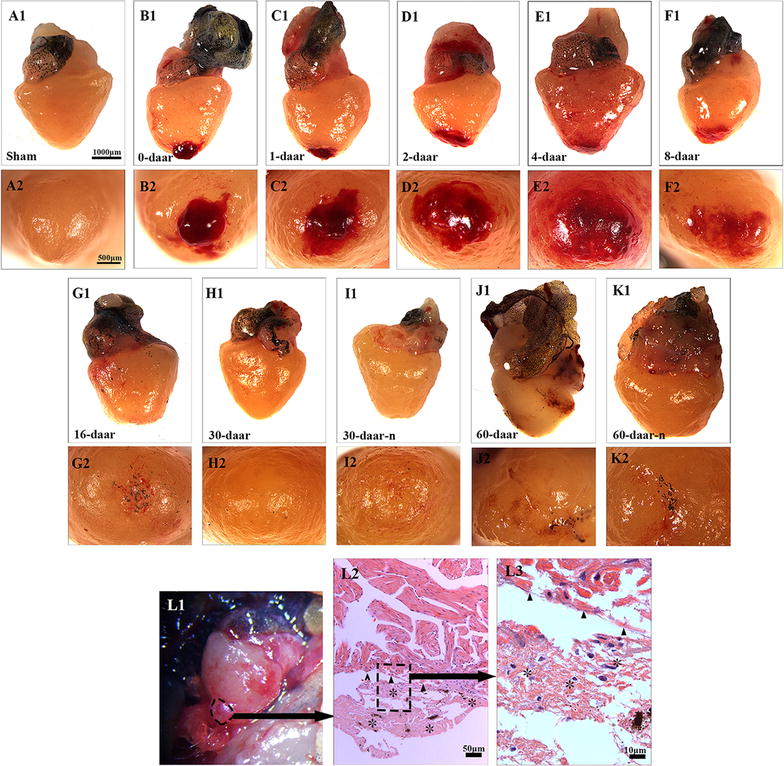Fig. 2.

Regeneration of the injured X. tropicalis heart is demonstrated by morphology. a1 A sham control heart. Bar = 1000 μm (the scale bar for a1–k1). a2 The end of sham control apex on the outer surface. Bar = 500 μm (scale bar for a2–k2). The images illustrate the regeneration process of amputated heart at 0 daar (b1, b2, approximately 30 min after resection), 1 daar (c1, c2), 2 daar (d1, d2), 4 daar (e1, e2), 8 daar (f1, f2), 16 daar (g1, g2), 30 daar (h1, h2; with a perfect regeneration morphology), 30 daar (i1, i2; with a nearly perfect regeneration morphology), 60 daar (j1, j2; with a perfect regeneration morphology) and 60 daar (k1, k2; with a nearly perfect regeneration morphology). l1 Surface view of adhesion between the regenerated site and peripheral tissues in a nearly perfect regenerated heart at 60 daar (circle with the dotted line). l2, l3 H&E staining showing adhesion between the regenerated site and peripheral tissues. High-power view of rectangle with a dotted line from l2 (l3). Adhesion occurred between the regenerated site and peripheral tissues in the hearts that regenerated with a nearly heart-shaped morphology. However, an intact epicardial structure (small arrows in l2) was observed in the region between the regenerated myocardium and the adhesion tissue (asterisk). This observation suggests that the injured myocardium maintains the capacity to regenerate with a non-perfect morphology when the injured myocardium is affected by inflammation-associated adhesion. Six frogs were inspected for 30 and 60 daar, while three frogs were inspected for other time points respectively
